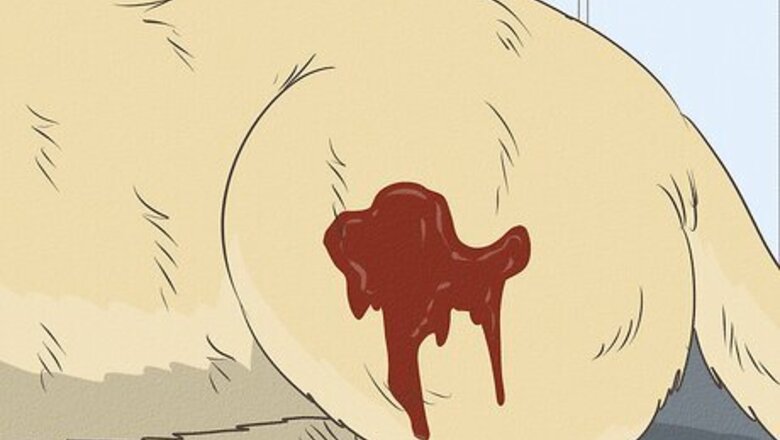
views
Determining if the Dog Bite Requires a Vet
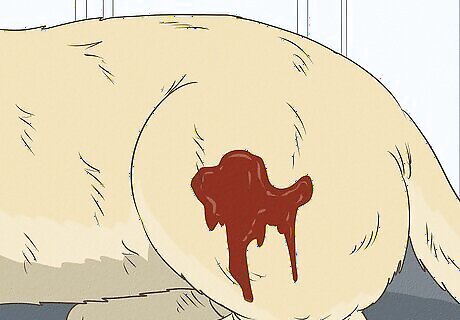
If your dog is bleeding heavily, take him to the vet. Blood pumping from the wound is a sign that an artery or large vein has been damaged. The blood vessel may need to be ligated (tied off) in a surgical procedure done by your vet.
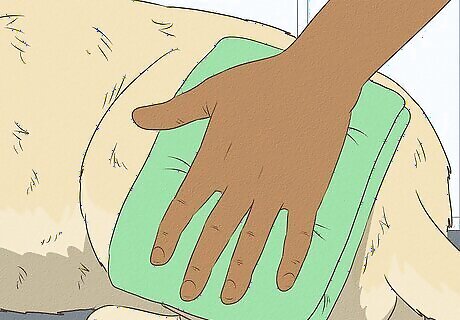
Use a sterile gauze swab to apply pressure to the wound. Do this as a first aid measure on the way to the vet. You will find sterile gauze swabs in a first aid kit. If you don’t have a first aid kit handy, you can use an article of clothing like a cotton t-shirt, diaper, or maxi pad to create a compress and press it against the wound with sufficient pressure to stop the bleeding. After 5 minutes, cautiously lift the compress up. If the bleeding starts again, replace the pad and hold it in place until you arrive at the vet clinic. Use a cotton t-shirt rather than a wool sweater or anything fuzzy, as fibers from these materials can get into the wound.
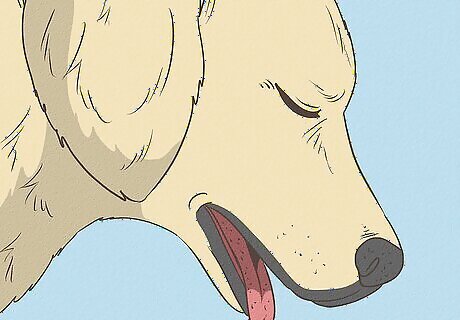
Check your dog to see if they have rapid, shallow breathing. This is a possible indication of shock, which can be life-threatening in it's own right, or that a tooth has penetrated into your dog’s chest and is allowing air to enter the thoracic cavity. Take them to the vet clinic as soon as possible, as this serious injury needs immediate medical attention. If you can see a wound over your dog’s ribs, place a pad (a sterile gauze swab or a folded cotton t-shirt) over the wound and either hold it there, or secure it in place with a tie or belt, tied around the dog's chest. You are trying to seal off the hole to prevent air from entering your dog’s chest and causing his lungs to collapse.
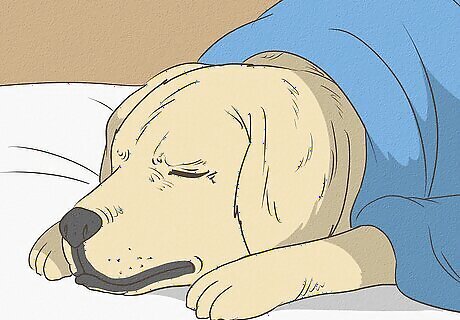
If your dog displays any weakness, pale gums, or loses consciousness, take him to the vet. There are all signs of possible shock or internal bleeding. Stop any obvious hemorrhage with sterile gauze or a cotton pad, cover the dog with a coat or blanket to keep him warm, and make your way to the vet clinic.
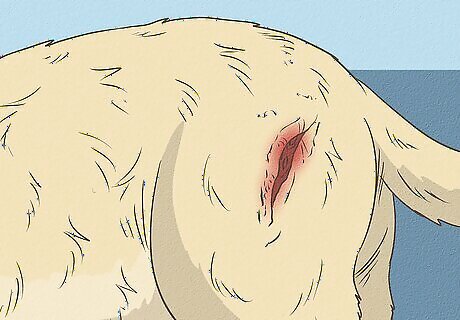
Search for any large wounds or flaps of skin on your dog. If your dog was shaken in the jaws of their attacker, a large wound or skin flap may have been torn away from the underlying tissues.
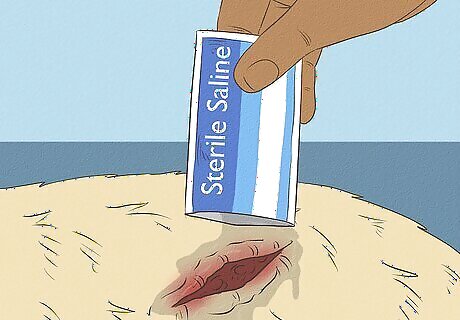
Use sachets of sterile saline from a first aid kit to flush the wound. If you do not have access to a first aid kit with saline, you can make a salt water solution. Use 16 ounces of previously boiled water and stir in one teaspoon of salt. Allow the solution to cool to body temperature and then soak cotton wool in the salt water, and use it to clean your dog's injuries. If you do not have access to sterile saline or time to make a salt water solution and your dog's wound warrants a trip to the vet, don't worry about this step. Your vet will be sure to thoroughly flush the area.
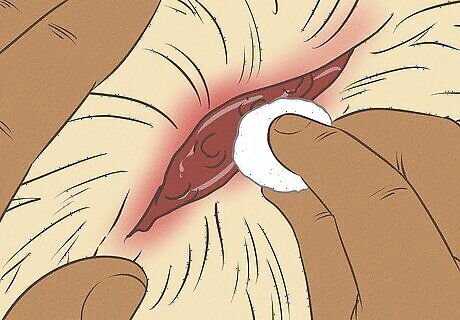
Clean any wounds as best as you can before heading to the vet. To clean the wound, snip the corner off a saline sachet and squirt the fluid over the wound. This flushes away contaminants and reduces the risk of infection setting in. Reserve a small volume of saline and use it to moisten the sterile dressing pad in the first aid kit. Place the moist dressing pad over the wound and bandage it in place. This keeps the exposed tissue moist on the way to the clinic and in optimal condition for suturing.
Determining if the Dog Bite is Treatable at Home
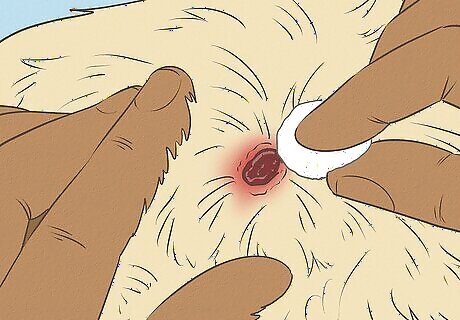
If your dog is bright, alert, and the wound is not bleeding, you can clean the wound at home. A nip or skin wound is fine to treat at home. Once you clean the wound, you can contact your vet to confirm if the dog should be brought in to be checked.
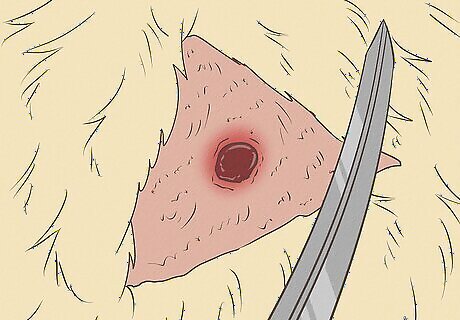
Clip the fur around the wound. To see the full extent of the damage, use a pair of scissors, ideally with curved blades, to trim the hair away from the wound edges. Start trimming at the wound edge and snip around the area until the whole wound is exposed. Repeat this for all the bite wounds you can see. Keep the blades parallel to the dog's skin, and look carefully to make sure you are not about to snip any skin. You may want to keep the scissors a fraction of an inch above the dog's skin to prevent accidental injury. Curved scissors help you to avoid accidental snips because the blade curves away from the skin. You can improvise with a pair of nail scissors if you do not have curved scissors. If you use a small pair of regular scissors, work with the tips rather than the whole blade for finer control.
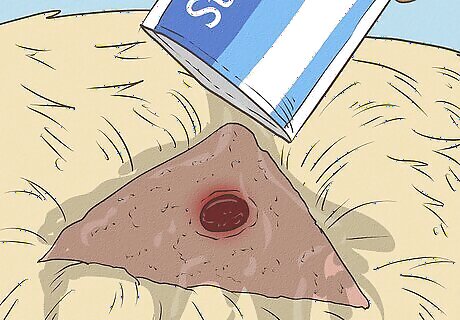
Bathe the wound in saline solution. Saline solution is ideal because it is gentle on the exposed tissue and will not dry it out. If you do not have access to a first aid kit with saline, you can make a salt water solution. Use 16 ounces of previously boiled water and stir in one teaspoon of salt. Allow the solution to cool to body temperature and then soak cotton wool in the salt water, and use it to clean the injuries.
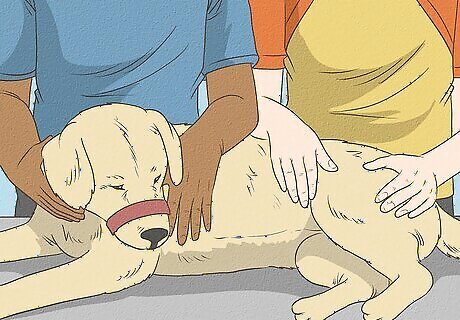
Ask someone to assist you as you clean your dog’s wound. Your dog will likely wiggle around and get jumpy or cranky as you try to assess and clean the bite, so ask a friend or neighbor to hold his head to steady him. If you cannot get someone to assist you, use a tie or cord as a muzzle. To do this, wind the tie around and around his muzzle with his mouth shut, and then tie the ends on themselves. EXPERT TIP Ray Spragley, DVM Ray Spragley, DVM Veterinarian Dr. Ray Spragley is a Doctor of Veterinary Medicine and the Owner/Founder of Zen Dog Veterinary Care PLLC in New York. With experience in multiple institutions and private practices, Dr. Spragley’s specializations and interests include non-surgical management of cranial cruciate ligament tears, Intervertebral Disk Disease(IVDD), and pain management in osteoarthritis. Dr. Spragley holds a BS in Biology from SUNY Albany and has a Doctor of Veterinary Medicine degree (DVM) from Ross University School of Veterinary Medicine. He is also a Certified Canine Rehabilitation Therapist (CCRT) through the Canine Rehab Institute as well as a Certified Veterinary Acupuncturist (CVA) through Chi University. Ray Spragley, DVM Ray Spragley, DVM Veterinarian Prevent dogs from aggravating their wounds. Keep dogs from slowing wound healing by outfitting them with an Elizabethan collar, medical bodysuits or anti-lick sprays. However, you should avoid amateur bandaging without guidance, as circulation problems can develop.
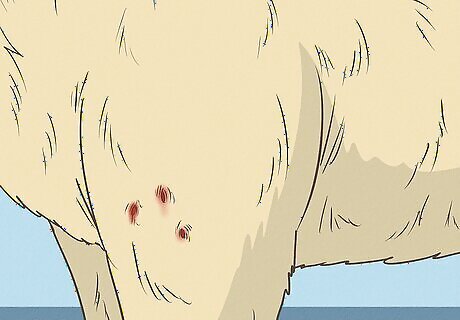
If your dog has puncture wounds, bring him to the vet. Puncture wounds are usually circular and measure less than a quarter of an inch across. These wounds are inflicted by the attacker’s canine teeth and do not always need to be sutured as they may heal on their own. But it’s best to get the puncture wound checked by a vet, because sometimes there is a pocket of dead space beneath the puncture. Dead Space occurs when the skin is wrenched away from the underlying tissues and is no longer attached. This forms a pocket, into which seepage of serum, or pus, can prevent healing. Dead Space may need surgical attention to tack it down, in order for the wound to heal.
Understanding How Your Vet Will Treat the Bite

Ask your vet to assess the extent of the bite and determine if sutures are needed. If the wound does not need suturing, you can expect it to scab over, and a week or so later the scab will peel away to reveal healed tissue underneath. Check the scabbed area every day to ensure it is dry and there is no pus present. Daily bathing with a cotton wool ball soaked in saline helps to keep the area clean and reduce the risk of infection. If the area starts to swell, or pus is discharging from the wound, consult with your vet.
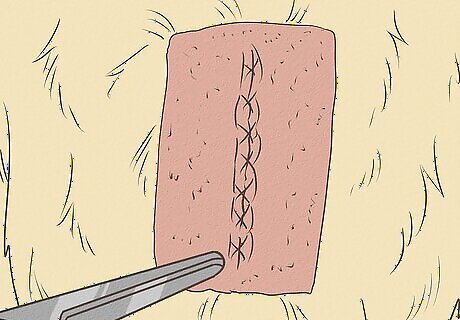
Allow your vet to suture the wound. Wounds longer than half an inch may need suturing. This can often be done under sedation and local anesthetic, unless the dog is aggressive or the wound in a difficult to access,in which case general anesthesia is required. Your veterinarian freshens the wound edges to provide a healthy healing surface and then places sutures. These stay in place for 10-14 days and can be removed without sedation, since it is a non painful procedure to snip the suture and pull it out. Check the sutures every day to make sure the area is dry, there is no pus discharge and it is not swollen. If the wound gets muddy, keep it clean by gently bathing it with cotton wool soaked in salty water. Make sure your dog can not lick at the wound, which may mean covering the wound with a T-shirt or putting a buster collar on the dog. If the wound becomes red, swollen, or there is a pus discharge, check in with your vet.
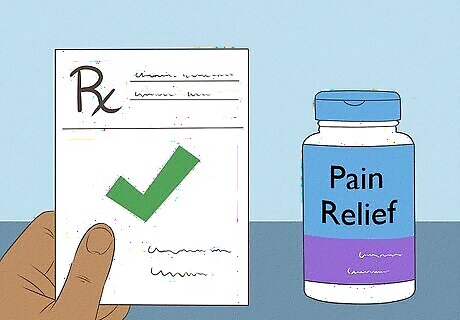
Get pain relief medication from your vet. Your dog is likely to be bruised and sore, and 4- 5 days of pain relief will be a much needed kindness for him. Usually, non-steroidal anti-inflammatory drugs (NSAIDs) are supplied. These act by inhibiting the release of chemical messengers (cyclooxygenases) in the body that encourage inflammation and pain. This medication will come as a liquid and should be given with or after food in order to reduce the risk of gastric ulceration. The dose is 0.1mg/kg given orally once a day. A typical dose is 1 milliliter (0.034 fl oz) of meloxicam (1.5mg/ml strength) for each 15 kg of body weight. Only give pain relievers that are prescribed for dogs by your veterinarian. Some pain medications can be deadly for pets.
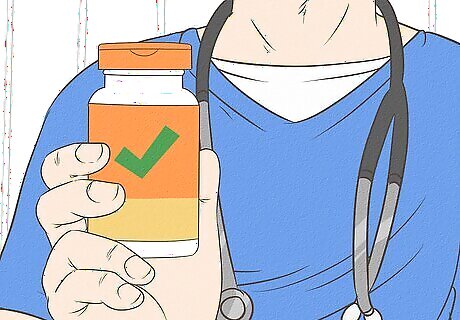
Ask your vet if antibiotics are needed. Depending on the vet, they may or may not prescribe antibiotics, but dog bites are not sterile so antibiotics are a wise precaution. A broad spectrum antibiotic like a potentiated amoxycillin can work against the bugs commonly found in a dog's mouth. This antibiotic acts by interfering with the bacterial metabolism and also disrupts their cell membrane. A typical dose is 12.5mg/kg twice a day orally for 5-7 days. So, for example, a 20 kg dog takes a 250mg tablet twice a day.




















Comments
0 comment